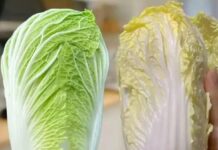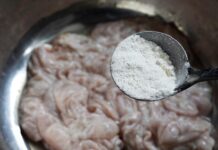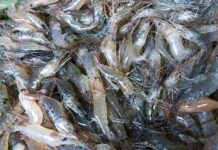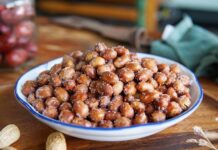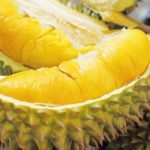1. How to Choose the Best Lychee: Big or Small Fruits?
2. Tips for Selecting Delicious Lychees
3. How to Store Lychees to Extend Their Freshness
Lychees are a beloved tropical fruit in Vietnam. The peak season for lychees is in June, which is the perfect time to indulge in these juicy, sweet, and luscious fruits. However, selecting the best lychees is not always an easy task.
Many people wonder whether they should choose big or small lychees to ensure the optimal quality. Does the size of a lychee fruit really matter when it comes to taste and sweetness?
Should You Choose Big or Small Lychees?
The size of a lychee can indeed influence factors such as its water content, sweetness, and the overall satisfaction of biting into one. However, it’s not always true that bigger lychees are better or that smaller ones are less tasty.
 Big or Small Lychees: Which Is Better? (Photo: Shutterstock)
Big or Small Lychees: Which Is Better? (Photo: Shutterstock)
In reality, when it comes to choosing the best lychees, size is not as important as examining other factors such as color, freshness, aroma, and the characteristics of the peel and seeds. Everyone has their own preference for sweetness and flesh thickness, so you may want to try both sizes to discover which type suits your taste buds the most.
Within the same variety of lychee, larger fruits tend to have more flesh and smaller seeds. The flesh of bigger lychees is often thicker and juicier, providing a satisfying mouthfeel. However, this doesn’t mean that all large lychees are superior, as sweetness and quality can vary due to other factors.
On the other hand, smaller lychees often pack a more intense flavor. Their flesh tends to be sweeter and less watery compared to larger fruits. The seeds in smaller lychees also tend to take up a larger proportion of the fruit.
In conclusion, the decision to choose big or small lychees ultimately comes down to personal preference. Both sizes have their unique advantages, and the final choice depends on your individual taste.
Tips for Selecting Delicious Lychees
When buying lychees, apart from size, there are several other factors to consider to ensure you pick the tastiest fruits.

Do You Know How to Pick the Sweetest Lychees? (Photo: Shutterstock)
Skin Color: When selecting lychees, the first important factor to consider is the color of the skin. The most desirable lychees have a reddish-pink or deep red hue. Avoid clusters with brown or overly green fruits, as they may be unripe or already spoiled. The skin color is also indicative of the lychee’s ripeness and flavor.
Freshness: Fresh lychees should have taut skin without any wrinkles or dryness. If the skin shows cracks, dark spots, or signs of softening, the fruit may be starting to spoil. Fresh lychees should also have good elasticity when gently pressed.
Aroma: Ripe and delicious lychees will emit a distinctive, sweet fragrance. If the lychees have no scent or an odd smell, it’s best to avoid them.
Stem: Look for lychees with small stems, crisp skin, and a white base. Lychees with small stems tend to have smaller seeds and thicker flesh, resulting in a sweeter and more satisfying flavor.
Firmness: When gently squeezed, a ripe lychee should feel slightly soft yet firm, not mushy. If it’s too hard, it’s unripe, and if it’s too soft, it may be overripe or past its prime.
Regional Specialties: Lychees are grown in various regions across the country, and each area has its own unique characteristics in terms of flavor and quality. For example, Thanh Ha lychees from Hai Duong province are renowned for their round, small shape, thin skin, thick flesh, and exceptional sweetness. On the other hand, Luc Ngan lychees from Bac Giang province are larger, with a milder sweetness and a distinct aroma. Choosing lychees from these regions can guarantee their quality and flavor.
How to Store Lychees to Extend Their Freshness
To maintain the freshness and quality of lychees after purchasing them, consider the following storage tips:
– Refrigerate: Store lychees in the refrigerator, preferably in the crisper drawer, to keep them fresh and prevent spoilage. You can place them in a plastic bag or an airtight container to retain moisture and prevent dehydration.
– Avoid Direct Sunlight: Do not expose lychees to direct sunlight, as the high temperatures can cause them to ripen too quickly and spoil.
– Do Not Wash Before Storing: Keep lychees dry before placing them in the refrigerator. Washing lychees before storage can introduce moisture, leading to faster spoilage.
According to VTC News











